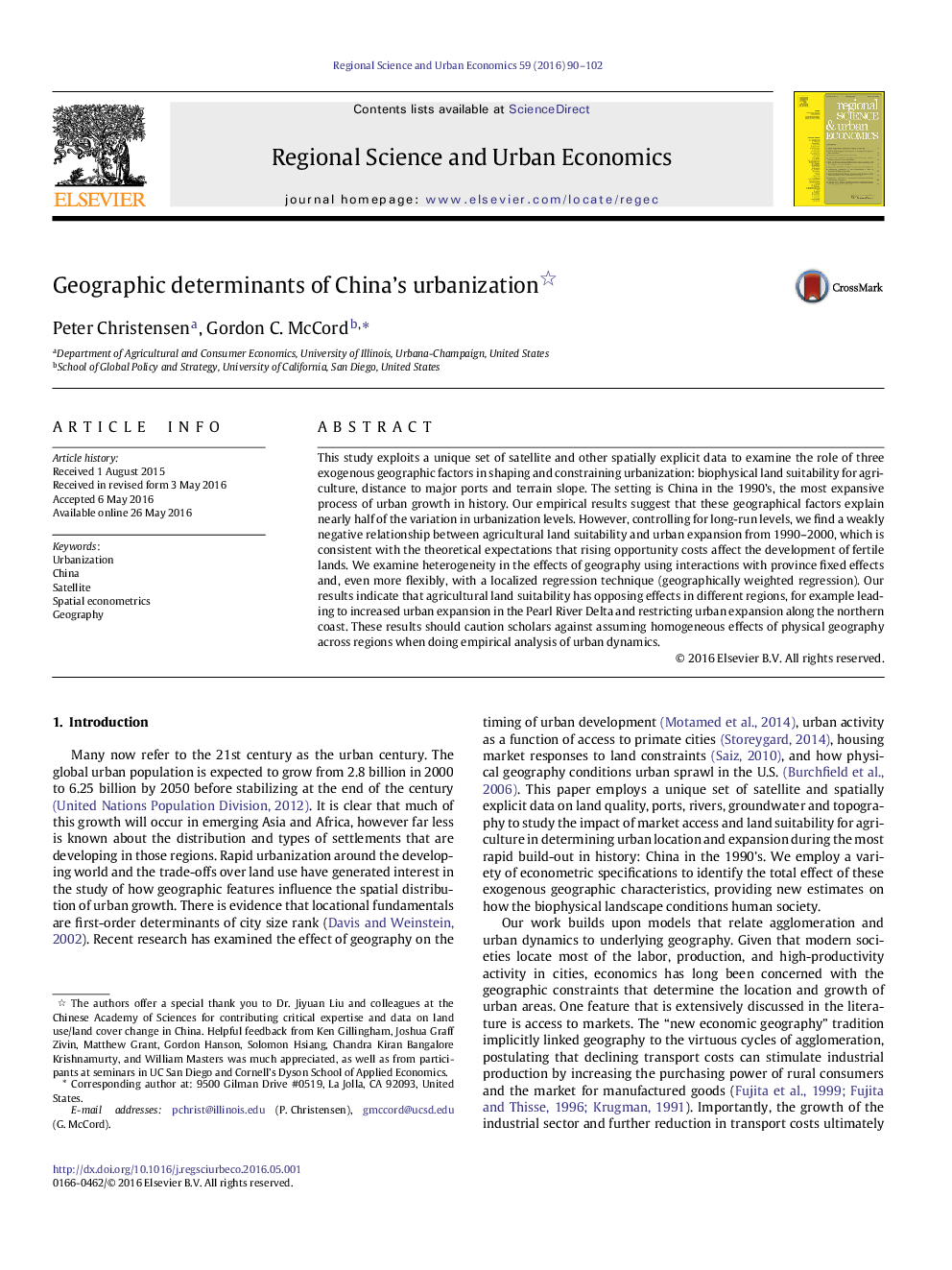| Article ID | Journal | Published Year | Pages | File Type |
|---|---|---|---|---|
| 982970 | Regional Science and Urban Economics | 2016 | 13 Pages |
•We exploit satellite data to examine geographic factors in China's urbanization.•Land fertility, distance to ports, and terrain explain half of variation in urban location.•Evidence for rising opportunity costs of developing fertile lands as urbanization proceeds.•We find that agricultural land suitability has opposing effects in different regions.•Results caution against assuming homogenous effects of geography in urbanization.
This study exploits a unique set of satellite and other spatially explicit data to examine the role of three exogenous geographic factors in shaping and constraining urbanization: biophysical land suitability for agriculture, distance to major ports and terrain slope. The setting is China in the 1990’s, the most expansive process of urban growth in history. Our empirical results suggest that these geographical factors explain nearly half of the variation in urbanization levels. However, controlling for long-run levels, we find a weakly negative relationship between agricultural land suitability and urban expansion from 1990–2000, which is consistent with the theoretical expectations that rising opportunity costs affect the development of fertile lands. We examine heterogeneity in the effects of geography using interactions with province fixed effects and, even more flexibly, with a localized regression technique (geographically weighted regression). Our results indicate that agricultural land suitability has opposing effects in different regions, for example leading to increased urban expansion in the Pearl River Delta and restricting urban expansion along the northern coast. These results should caution scholars against assuming homogeneous effects of physical geography across regions when doing empirical analysis of urban dynamics.
